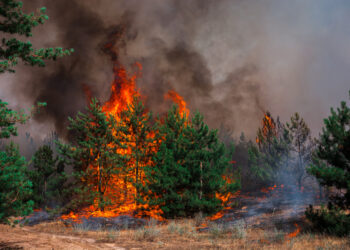By Marne Hayes EBS COLUMNIST
While we wait out the last months of winter—or spring, depending on the day—there is no time like the present to start thinking about how to proactively transform our landscapes to fit our climate and our community’s water capacity. Consider water-wise landscapes to be the new black, if you will. In other words, water-dependent, non-native landscapes are becoming a thing of the past, especially in Montana’s summer months when water resources become more stressed by high demand and little rain, and our landscapes become more susceptible to drought.
Landscape transformation might sound like a big lift, but taken in small increments, it can be just as effective over the long term. So, as we pass the official first days of spring and progress into April and on to summer, we invite you to get into planning mode, which is the best and easiest first step to setting your own path for outdoor water conservation. There are a few things to start thinking about, and we hope to lay them out for you in a way that inspires you to consider how your own outdoor spaces can be more resilient to fires, friendlier to our ecosystems, and more mindful of water as summer approaches.
While we understand the desire for a manicured lawn, there are more practical and still aesthetically pleasing ways to build outdoor spaces. First, ask yourself a few questions about the elements of your outdoor space, and the ways that you may be inclined to use it. Take stock of what kind of natural sun, shade, water runoff or snow melt the areas are exposed to. Who uses the space? Is there a lot of foot or animal traffic, or is it mostly left undisturbed even in the height of summer’s outside uses? Could your space use less grass and more native elements that can survive in our hot, dry summers?
And more importantly, ask yourself to consider the benefits of a transformed landscape. Water conservation is essential in our growing community, and native landscapes protect our community from wildfires. In a climate where drought is a natural occurrence in late summer, proactively making changes in your own space will contribute in both big and small ways to a healthier and more sustainable landscape.
To start, try to select native and drought-tolerant plants that require less water once established. These plants are more likely to adapt to our climate and can thrive with minimal irrigation. As you add plants to your outdoor space, consider their water needs and arrange plants with similar water needs together. This organization naturally allows you to avoid over-watering plants that don’t need much water and under-watering those that need more. On the topic of irrigation, choose watering times wisely. Water in the early morning or late evening to maximize absorption and avoid watering during the hottest parts of the day when water quickly evaporates.
Next, consider the lawn itself. Lawns typically require a lot of water. Consider reducing lawn space by adding more drought-tolerant plants, ground covers, or using artificial turf in some areas. If turf isn’t your style, there are other grass alternatives like clover, creeping thyme or sedum. These alternatives can provide ground cover without needing much water. Around plants, consider non-combustible landscape materials to help retain moisture, suppress weeds, and regulate soil temperature. Organic materials like brick chips, pea gravel or washed rock are ideal.
When rain does fall, stormwater features could be a garden’s friend. Help divert water from your gutters or driveway back into your landscape, or through a permeable rock surface so that it can be returned to the soils and groundwater.
And lastly, find inspiration. Other than the very basic inherent conservation advantages to using less water in outdoor spaces, mindful landscape development can lead to visually pleasing spaces that respect our community’s water resources. Alpenscapes is a great local resource, and a community partnership that is built around the collaboration of four existing Big Sky organizations, based on the belief that landscapes can be both beautiful and beneficial to the environment. In a future where wildfire-resistant, water-wise, and wildlife-friendly landscaping is the norm, we encourage you to find your own steps today, for a more resilient community tomorrow.
Marne Hayes is a content contributor with the Gallatin River Task Force.













